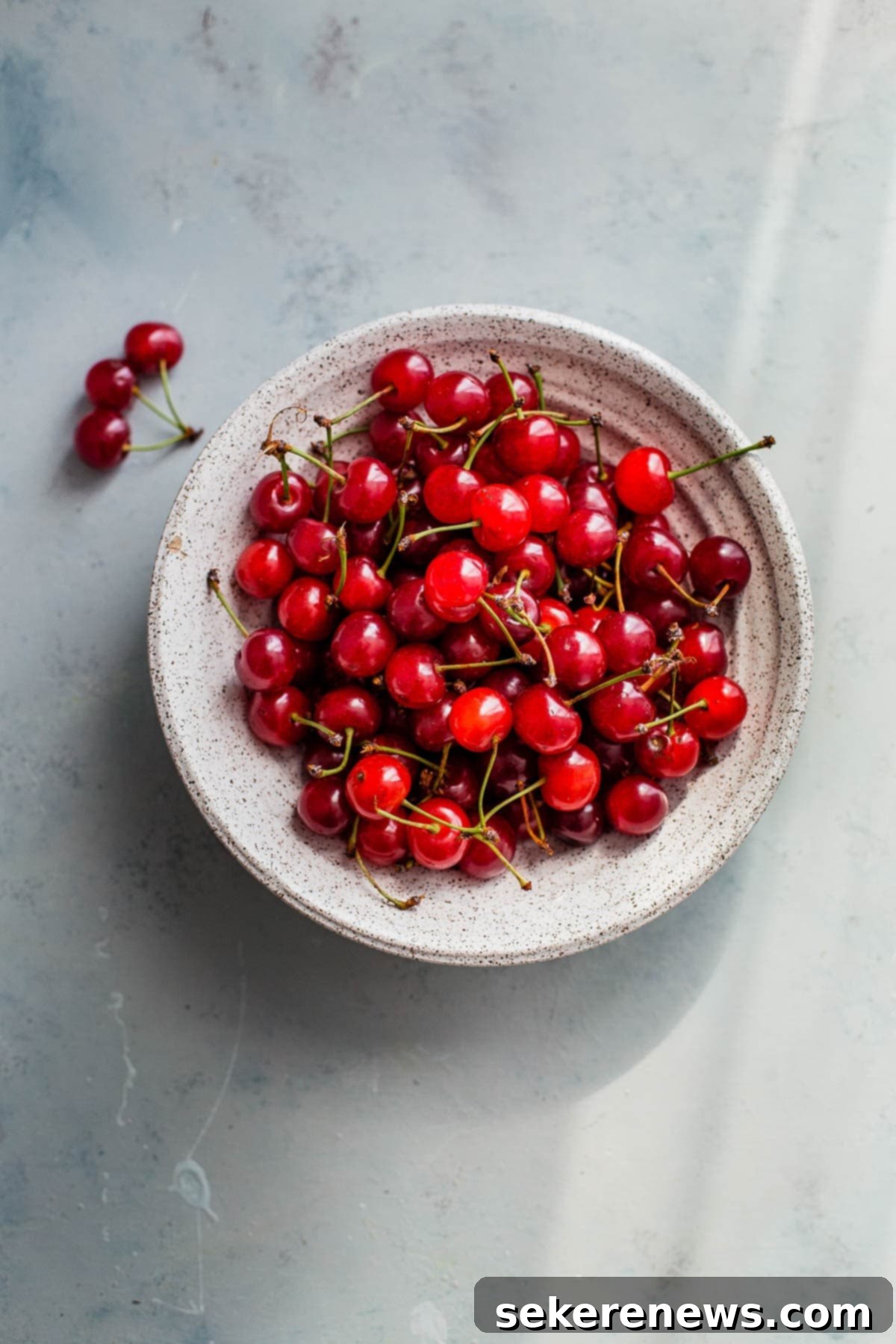Mastering Sour Cherries: Your Essential Guide to Cooking, Baking, and Enjoying This Tart Fruit
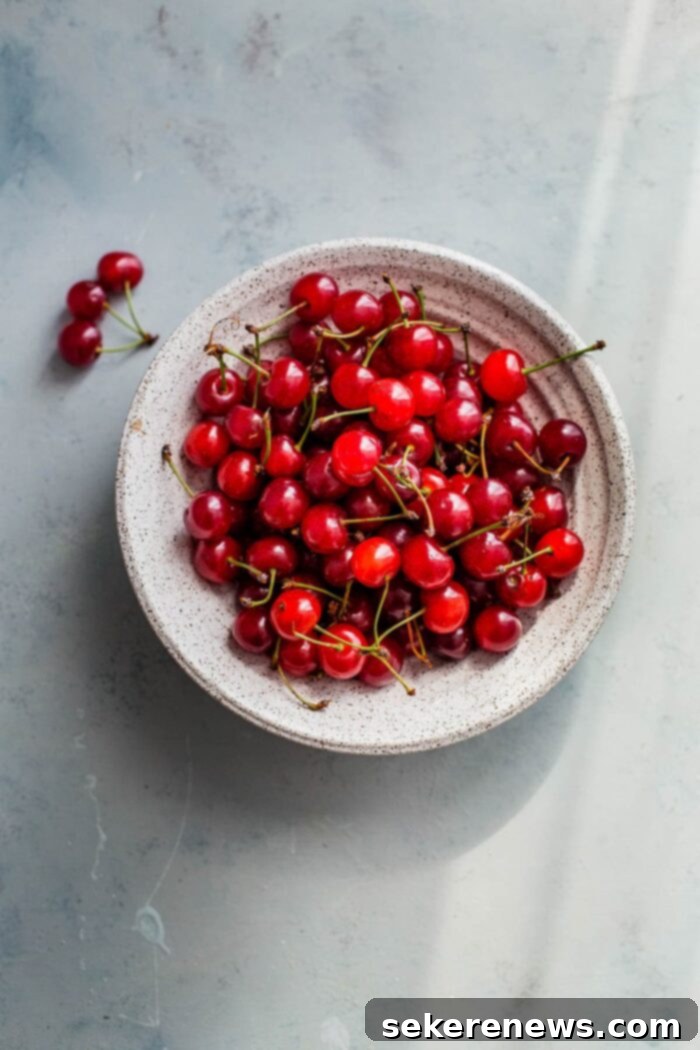
Welcome back to our beloved ingredient spotlight series! Today, we’re diving into the delightful world of cherries, with a special focus on their often-overlooked, tart cousin: the sour cherry. These stunning, bright red jewels make a fleeting appearance at farmer’s markets for just a few short weeks each year, making their season a truly special event for food enthusiasts.
For many, fresh sour cherries can be a rare find. Living on the East Coast, I seldom encountered them, and it wasn’t until I moved to the Chicago area that I discovered the bounty of fresh Michigan sour cherries. My very first experience baking with them resulted in a memorable sour cherry berry crisp – a truly transformative experience! The season is notoriously short, emphasizing the importance of seizing the opportunity to enjoy them while they are available.
While their intense tartness might discourage snacking on them raw in large quantities, this very characteristic is precisely what makes sour cherries an unparalleled ingredient for baking, jamming, and various culinary applications. Their low sugar content provides a natural balance, allowing you to control the sweetness level in your finished dishes, resulting in complex and wonderfully flavored treats.
The Unique Charm of Sour Cherries
Sour cherries, also known as tart cherries, are distinct from their sweeter counterparts like Bing or Rainier varieties. Their vibrant acidity not only provides a refreshing tang but also serves as a fantastic counterpoint to rich flavors in desserts and savory dishes alike. This bright flavor profile is what gives them their versatility, making them a favorite among bakers and chefs who appreciate ingredients that offer both depth and zest.
Beyond their culinary appeal, sour cherries are also celebrated for their potential health benefits. They are rich in antioxidants, particularly anthocyanins, which give them their striking red color and are known for their anti-inflammatory properties. This makes them not just a delicious addition to your diet, but a beneficial one too. Embracing the sour cherry season means treating yourself to a delightful, nutrient-packed fruit.
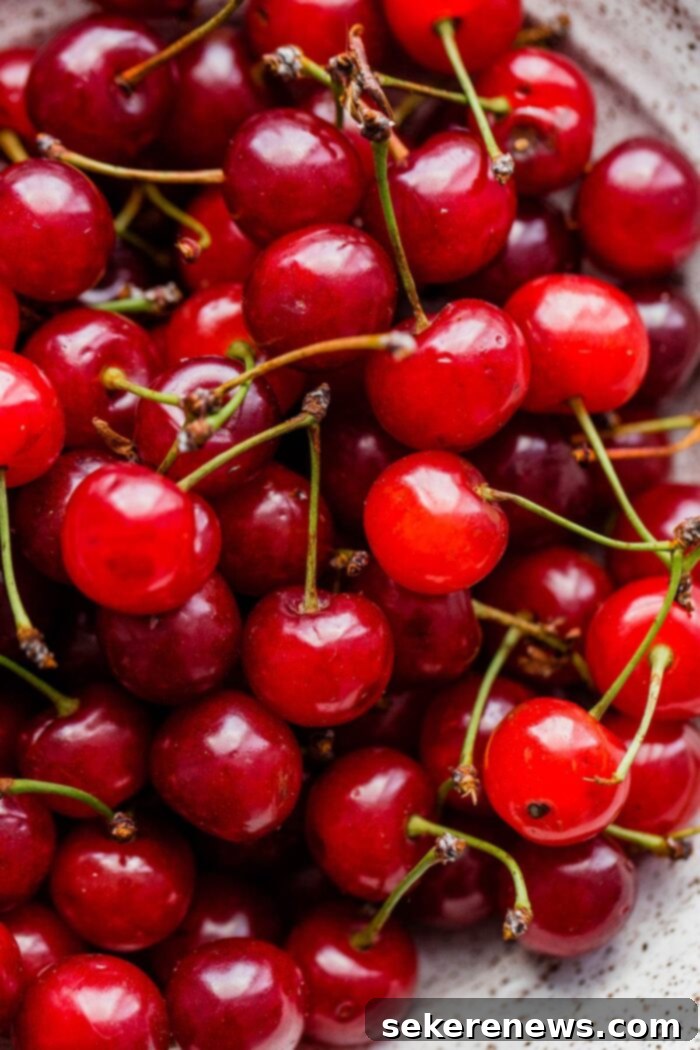
Sour Cherry Varieties: What to Look For
While there are many types of cherries, three major varieties of sour cherries dominate the market, each with its own unique characteristics: Montmorency (shown in the image above), Morello, and Early Richmond.
- Montmorency Cherries: These are arguably the most popular and widely grown sour cherry in North America, particularly in Michigan. Known for their vibrant, bright red skin and clear flesh, Montmorency cherries have a classic tart-sweet flavor that makes them ideal for pies, preserves, and juices. They are often the variety you’ll find at your local farmer’s market during the brief summer season.
- Morello Cherries: Darker in color, often a deep red or nearly black, Morello cherries tend to be juicier and have a more intense, richer tartness compared to Montmorency. They are popular in Europe and are excellent for making liqueurs, preserves, and traditional European desserts. If you find them, their robust flavor is a true treat.
- Early Richmond Cherries: As their name suggests, these cherries ripen earlier in the season. They are typically a bit lighter in color than Montmorency and have a milder tartness. While less common commercially, they are a favorite for home gardeners looking for an early harvest.
A fascinating tidbit about sour cherries is their light sensitivity. Unlike many fruits, sour cherries will actually darken in color when exposed to artificial or natural light. This phenomenon explains why Montmorency cherries, for example, can range from a bright ruby red to a deeper crimson depending on their post-harvest handling and storage, though their internal flavor remains consistent.
How to Pick, Clean, and Store Sour Cherries
Successfully enjoying sour cherries begins with proper selection and storage. Due to their slightly softer flesh compared to sweet cherries, sour cherries require a bit more care. I always aim to use them within a day or two of purchase to ensure maximum freshness and quality.
Picking the Best Sour Cherries:
- Firm Flesh: Look for cherries that are firm to the touch but not hard. Avoid any that feel mushy or overly soft.
- Stems Attached: Always choose cherries with their stems still attached. The stem acts as a natural seal, protecting the cherry from drying out and preventing premature spoilage. Cherries without stems are more prone to becoming mushy quickly.
- Vibrant Color: Seek out cherries with a bright, consistent color indicative of their variety (e.g., bright red for Montmorency, darker red for Morello).
- No Blemishes: Avoid cherries with bruises, cuts, or mold, as these will significantly reduce their shelf life.
Cleaning Sour Cherries:
Before using your cherries, gently wash them under cool running water. It’s best to wash them right before you plan to use them, rather than storing them wet, as excess moisture can encourage spoilage.
Storing Sour Cherries:
To prolong their shelf life, cherries should always be stored unwashed in the refrigerator. Place them in a breathable container or a loosely closed plastic bag. Unlike other stone fruits, cherries do not continue to ripen or improve in flavor or texture once picked. Therefore, it is best to consume them as soon as possible after purchasing.
Sour Cherry Surplus? Freeze Them! If you find yourself with an abundance of sour cherries during their brief season, freezing is an excellent way to enjoy them year-round. Here’s how:
- Wash and Pit: Gently wash the cherries and then pit them (see our pitting guide below!).
- Arrange on Baking Sheet: Lay the pitted cherries in a single layer on a parchment-lined baking sheet. This prevents them from clumping together.
- Flash Freeze: Place the baking sheet in the freezer for 1-2 hours, or until the cherries are frozen solid.
- Transfer to Storage: Once frozen, transfer the individual cherries to a freezer-safe bag (like a Ziploc bag) or an airtight container. Label with the date.
Frozen sour cherries can last for up to 6-8 months and are perfect for baking, smoothies, or making sauces later in the year. There’s no need to thaw them completely for most baking applications; they can often be used directly from frozen.
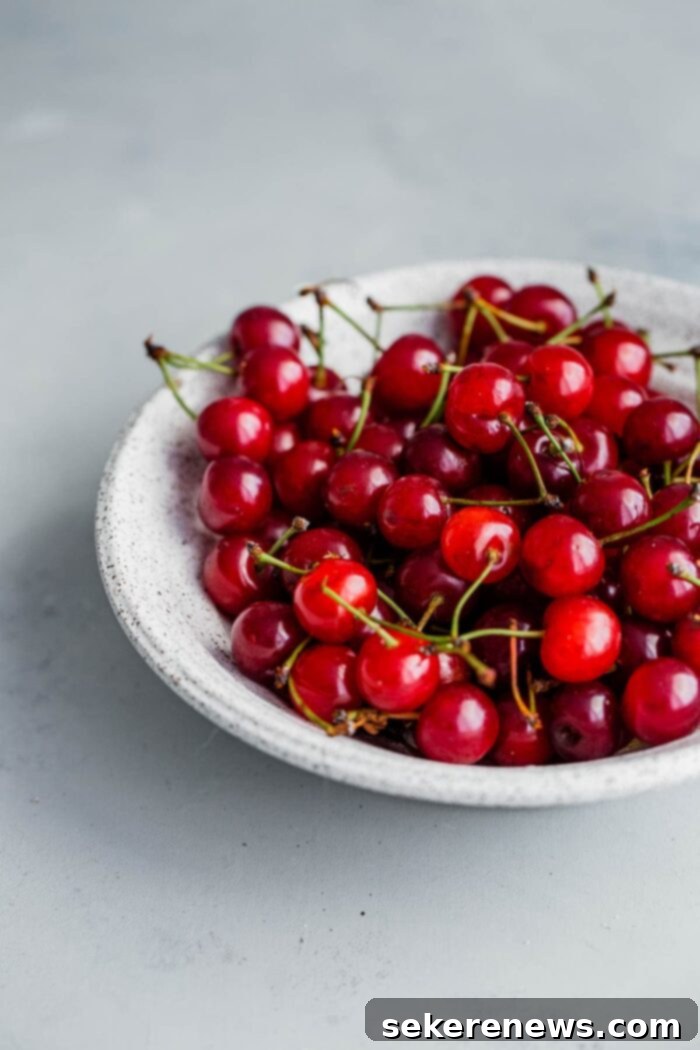
The Easiest Way to Pit Cherries: A Must-Have Tool
If you love cooking and baking with fresh cherries, especially sour cherries, I cannot emphasize enough the value of investing in a good-quality cherry pitter! For 27 years of my life, I resisted, thinking it was an unnecessary gadget. However, once I finally got one, I instantly fell in love with its efficiency and simplicity. It truly is a game-changer.
Cherry pitters are surprisingly affordable and incredibly effective. They are, quite frankly, the only barrier standing between you and a perfect homemade sour cherry pie, or any dessert that calls for a significant number of cherries. While the internet is rife with various “hacks” for pitting cherries – using paper clips, chopsticks, or pastry tips – these methods are often quite messy, cumbersome, and time-consuming, especially when dealing with a large batch. A dedicated cherry pitter makes the task quick, clean, and enjoyable.
The More You Know: The Secret of Unpitted Cherries in Clafoutis
If the thought of pitting cherries isn’t appealing (or you’re simply feeling lazy – and who could blame you?), there’s a wonderful, traditional French dessert called cherry clafoutis that often utilizes unpitted cherries. Traditionally, clafoutis are made with the pits left in. When cooked or heated, cherry pits contain a compound called benzaldehyde, which imparts a subtle yet distinctive almond flavor to the custard. This aromatic essence is precisely what lends clafoutis its signature, nuanced taste, making it a truly authentic and unique culinary experience. The small amount of benzaldehyde released during cooking is not a concern for health, and it truly enhances the dish.
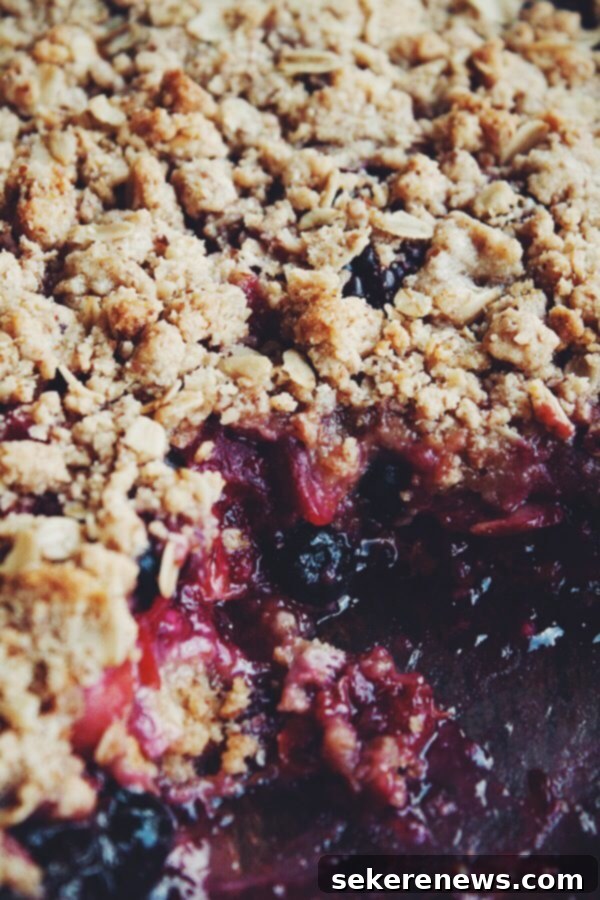
Sour Cherry Recipe Ideas: Endless Culinary Possibilities
The tart, bright flavor of sour cherries makes them incredibly versatile in the kitchen. They shine in a myriad of dishes, balancing sweetness and adding a wonderful depth of flavor. Whether you’re a seasoned baker or just starting out, there’s a sour cherry recipe waiting for you. Here are some fantastic ideas to inspire your next culinary creation:
Classic Baked Goods and Desserts:
Sour cherries truly excel in desserts where their tartness can cut through rich, sweet components, creating a harmonious balance that sweet cherries simply can’t achieve. Think of the perfect contrast they offer in creamy custards or buttery crusts.
- Sour Cherry Berry Crisp: A delightful combination of juicy tart cherries and other berries, topped with a buttery, crumbly oat topping. This recipe is a perfect introduction to baking with sour cherries.
- Sour Cherry Crumb Bars (Washington Post): These portable bars offer a delicious cherry filling nestled between a tender shortbread crust and a crumbly topping, ideal for picnics or bake sales.
- Sour Cherry Pie (Serious Eats): The quintessential sour cherry dessert. A flaky crust filled with a luscious, tart cherry filling is a summer dream come true. The acidity of the cherries prevents the pie from being overly sweet.
- Clafoutis: As mentioned earlier, this rustic French baked dessert, similar to a thick pancake or custard, is traditionally made with unpitted sour cherries, allowing their pits to infuse a subtle almond essence into the creamy batter.
- Tarts and Galettes: Sour cherries make stunning fillings for open-faced tarts or free-form galettes, often paired with almond cream or a simple sugar glaze.
Preserves and Condiments:
The high pectin content and natural acidity of sour cherries make them perfect for preserving, allowing you to enjoy their flavor long after the season ends.
- Perfect Sour Cherry Jam (Serious Eats): Capture the essence of summer in a jar with a vibrant, intensely flavored sour cherry jam, perfect for toast, scones, or as a topping for yogurt.
- Sour Cherry Compote or Sauce: A simple cooked cherry sauce is incredibly versatile. Drizzle it over pancakes, waffles, ice cream, or even serve it alongside roasted duck or pork for a sweet and savory contrast.
Refreshing Drinks and Frozen Treats:
Cool down with the invigorating tang of sour cherries in beverages and frozen desserts.
- Sour Cherry Frozen Yogurt (Lottie + Doof): A light and refreshing dessert that beautifully showcases the tartness of the cherries, offering a guilt-free indulgence.
- Sour Cherry Smoothies or Juices: Blend fresh or frozen sour cherries into smoothies for a powerful antioxidant boost and a vibrant flavor. Fresh sour cherry juice is also a delicious and healthy beverage on its own.
- Cocktails: Muddle sour cherries into cocktails for a sophisticated and flavorful twist. They pair wonderfully with spirits like bourbon, gin, or vodka.
We hope this comprehensive guide has illuminated the wonderful world of sour cherries and inspired you to make the most of their brief, delicious season. From selecting and storing to pitting and preparing, these tart gems offer an abundance of culinary opportunities. Don’t let their fleeting appearance deter you; embrace their unique flavor and elevate your cooking and baking to new heights!
For even more culinary inspiration and to explore other fascinating ingredients, visit our other Ingredient Spotlight posts. Happy cooking!
